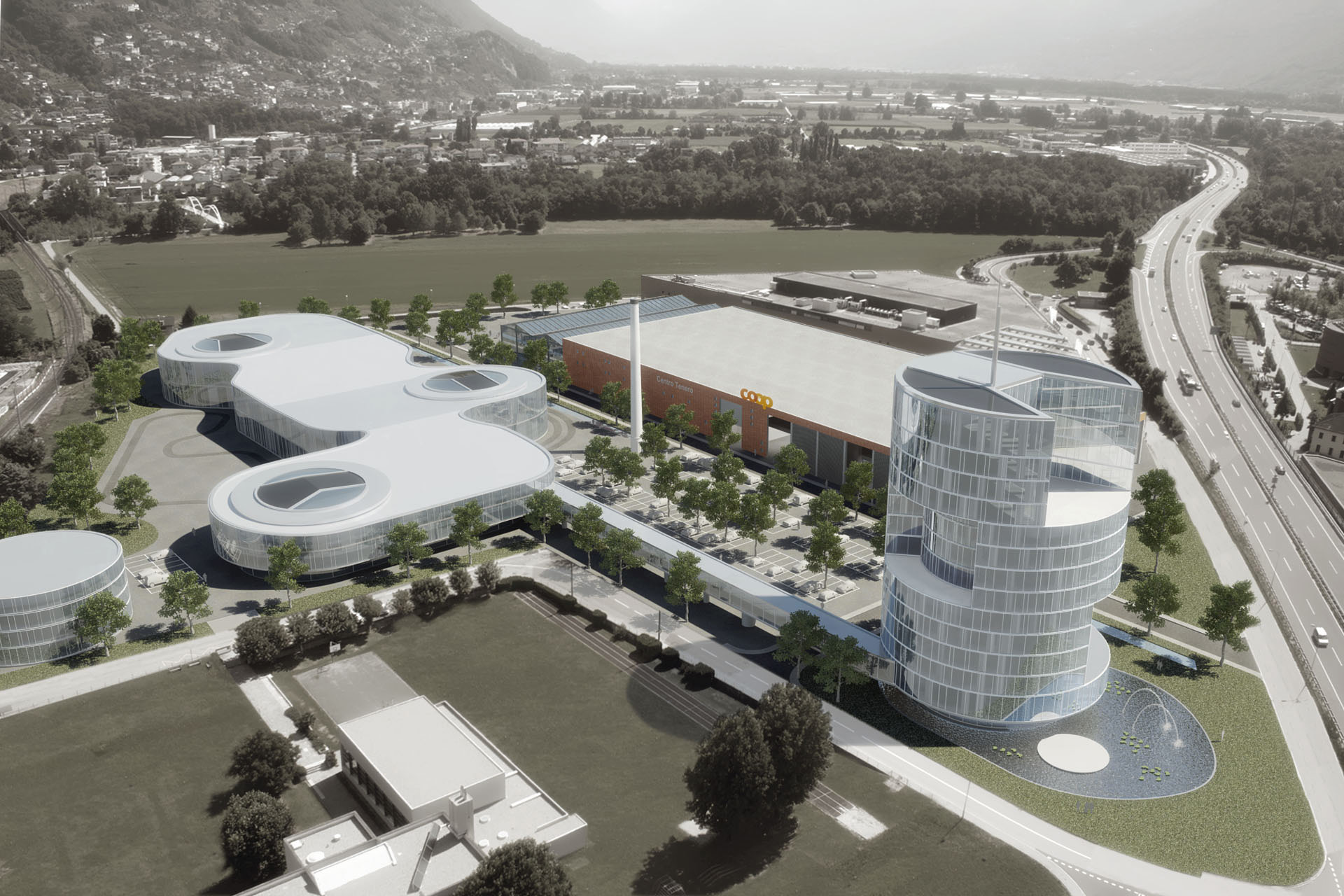nanoFlowcell AG‘s plans for 2016 include the construction of a state-of-the-art research and development centre named « QUANT City » in Tenero in the Swiss canton of Ticino. Over an area of 25,000 square metres, the activities at QUANT City will be devoted to research into and further development of flow cell technology and the testing of new applications for the nanoFlowcell®, in which – to put it in very simple terms – two ionic fluids generate electricity by means of a chemical process. Completion is planned for 2018. Between 150 and 200 new jobs are expected to be created at the site in Ticino for engineers, researchers and lawyers, jobs that will indirectly create or safeguard around a further 2,500 jobs with suppliers and service providers in the area around Ticino.
With « QUANT City » the company fonded in 2013 intends to push further ahead with the many possible uses for the nanoFlowcell® in industry and by consumers. From further developments in the automotive sector through to use as an energy system for buildings and applications in shipping, aerospace and rail traffic, the researchers and developers at QUANT City will fathom out cost-effective and ecologically worthwhile applications and transfer these into practical use.
Nunzio La Vecchia, Chief Technical Officer at nanoFlowcell AG, is motivated and also optimistic for the future: « With the nanoFlowcell®, we have the potential to create the most innovative, sustainable and enduring energy technologies in the world. It is a technology that has many applications and that we at QUANT City will continue to develop and intend to make market-ready. In order to focus on maintaining our current research edge, QUANT City will give us an infrastructure with the technical and scientific requirements necessary for our success. »
The operator will be the newly founded company nanoResearch SA, a wholly-owned subsidiary of nanoFlowcell AG. Aside from the intensive further development of the nanoFlowcell®, the tasks of the company, which was founded in November 2014, will also include the marketing of the patent and licence rights to the nanoFlowcell technology. For this reason, international patent agents and lawyers will also work at QUANT City.
Using virtual reality to achieve the goal
Virtual reality will be at the core of the research work carried out at QUANT City. In order to pursue a combination of research and development at this location, nanoFlowcell AG will relocate its existing « nanoFlowcell DigiLab » from Zürich to Tenero. A vital role in the principle of virtual reality is played by the graphic representation of reality and its physical and chemical characteristics in an interactive, virtual environment. This will involve the graphic implementation, representation and assessment in real time of computer-supported results from the research and development activities. State-of-the-art 3D animations and simulation software will be used for this.
With the help of virtual reality, it should also be possible to push ahead with the scaling of the nanoFlowcell® hardware for different applications. « As the nanoFlowcell® contains no moving parts, there are in theory no limits to the scaling of this energy system. We can be small, but we can also be big. And that’s what will be simulated, investigated and tested in our research with virtual reality, » says CTO Nunzio La Vecchia.
Small series production of the QUANT sports car in a modular design
Nunzio La Vecchia’s team is currently working hard on obtaining approval for the series production of the QUANT F with the nanoFlowcell®, whose predecessor model, the QUANT E, has already been approved by TÜV in Germany for individual use in Germany and Europe. As soon as the requirements are met for series production, the new QUANT will go into small series production in QUANT City.
A modular design of the QUANT will be produced here, which means that finished components such as the chassis, axle systems, on-board systems and engine and gear components will be delivered pre-manufactured to QUANT City and will undergo final assembly here.
QUANT Academy
As a centre for the further development of flow cell technology, nanoFlowcell AG in QUANT City will in future also be responsible for scientific tasks. In addition to fundamental research, the research and teaching around flow cells will also be a fixed part of QUANT City through collaborations with universities, institutes and other scientific establishments. To this end, the « QUANT Academy » will be founded, which will combine all areas of research and development within the nanoFlowcell AG company group. Scientific work such as degree dissertations and doctoral theses on flow cell technology and also on ionic fluids as energy sources of the future can and will in future be carried out at QUANT City within the QUANT Academy. To this end, nanoResearch SA will offer not just the premises but also the technical and scientific requirements. Prospective scientists, engineers and doctoral candidates will thus be given the opportunity to learn from and carry out research with leading figures from the fields of research and teaching as well as gaining practical experience in industry.
nanoFlowcell AG, which was founded at the end of 2013, is an innovative research and development company. The focus of the research carried out by nanoFlowcell AG is on the further development of drive technology and the systematics of flow cell technology. With the granting of approval from the Ministry of Transport by SGS TÜV Saar in July 2014 and the associated driving permit for Germany and Europe, nanoFlowcell AG launched the first car with flow cell drive onto the roads, the QUANT E. The next milestone for the company will be the authorisation for series production of the QUANT F and the development of further uses for the nanoFlowcell® in other industries and business areas. To this end, two wholly-owned subsidiaries of nanoFlowcell AG were founded in 2014, nanoProduction GmbH in Waldshut in Germany and nanoResearch SA in Switzerland.
————-

